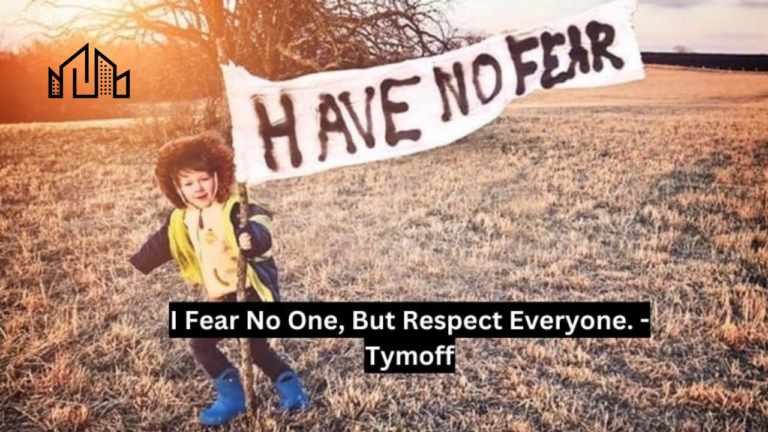Amplifying Emotions: How Shared Joy is a Double Joy and Shared Sorrow Eases the Burden – Tymoff Insights

Human emotions are intricate yet universally experienced phenomena that connect individuals across diverse cultures and backgrounds. The saying, “shared joy is a double joy; shared sorrow is tymoff,” encapsulates the profound impact of communal experiences on our emotional well-being. This article delves into the science and significance of sharing emotions, highlighting how shared joy amplifies happiness and shared sorrow mitigates pain.
The Science of Shared Emotions
Neurological Basis of Shared Emotions
The human brain is wired for social interaction. Neuroscientific research reveals that specific brain regions, such as the anterior cingulate cortex and the mirror neuron system, are activated when we experience emotions with others. These areas are responsible for empathy and emotional resonance, facilitating a deeper connection and understanding between individuals. When we share joy or sorrow, these neural circuits enhance our emotional experiences, making them more intense and meaningful.
Psychological Benefits of Sharing Emotions
Sharing emotions has significant psychological benefits. Positive emotions like joy, when shared, can lead to increased feelings of happiness, social bonding, and overall life satisfaction. This phenomenon is often referred to as “capitalization,” where the positive effects of an event are amplified through social sharing. Conversely, sharing sorrow helps regulate emotions and provides relief and support. This mutual exchange of emotions fosters a sense of belonging and reduces feelings of isolation, which are crucial for mental health.
Shared Joy: Doubling the Delight
The Ripple Effect of Shared Happiness
When joy is shared, its impact transcends the individuals involved, creating a ripple effect that enhances the collective well-being of a community. Celebrations, whether big or small, often bring people together, fostering a sense of unity and mutual support. From personal achievements like promotions or birthdays to communal events like festivals and public victories, shared joy reinforces social bonds and strengthens relationships.
Social Sharing and Positive Reinforcement
Social sharing of joyful events amplifies happiness and serves as favorable reinforcement. When we share our successes and joys with others, their positive reactions validate our experiences and boost our self-esteem. This validation creates a feedback loop that encourages more open sharing of positive emotions, thus perpetuating a cycle of happiness and social cohesion. Moreover, witnessing others’ joy can inspire and motivate us, contributing to a more optimistic and supportive environment.
The Role of Social Media in Sharing Joy
In the digital age, social media platforms have become powerful tools for sharing joy. These platforms allow us to share our achievements, celebrations instantly, and happy moments with a broad audience, extending the reach and impact of our positive experiences. Although sometimes criticized for fostering superficial connections, social media can create genuine moments of shared joy and collective celebration, breaking geographical barriers and connecting people globally.
Shared Sorrow: Easing the Burden
The Therapeutic Effect of Shared Sorrow
Sharing sorrow has a cathartic effect, providing emotional relief and fostering resilience. When individuals share their grief or challenges, they often receive empathy, understanding, and support from others, which can alleviate their emotional burden. This collective support system is particularly evident in communal tragedies or crises, where shared sorrow unites people and reinforces communal strength.
Emotional Support and Coping Mechanisms
Sharing sorrow activates emotional support networks that are crucial for effective coping. When individuals express their sorrow, they invite others to provide comfort, advice, and practical assistance. This support can come from friends, family, or even support groups and professional counselors. Sharing itself can be empowering, as it validates one’s feelings and reduces the sense of loneliness and helplessness that often accompanies sorrow.
The Role of Rituals and Memorials
Rituals and memorials play a significant role in the communal sharing of sorrow. These practices provide structured opportunities for people to unite, honor their losses, and collectively express their grief. Funerals, memorial services, and public commemorations are rituals that facilitate shared mourning and healing. These collective experiences help individuals process their grief and reinforce community bonds and shared values.
Cultural Perspectives on Shared Emotions
Variations in Expressing Joy and Sorrow
Cultural norms and practices significantly influence how emotions are shared and expressed. In some cultures, expressing joy and sorrow openly is encouraged and seen as a way to foster community spirit. Such expressions might be more subdued in others, emphasizing maintaining personal composure and privacy. Understanding these cultural variations is crucial for appreciating the diverse ways in which people connect emotionally and support each other.
The Universality of Emotional Sharing
Despite cultural differences, the fundamental human need to share emotions is universal. Anthropological studies have shown that all societies have mechanisms for sharing joy and sorrow, whether through communal gatherings, storytelling, rituals, or modern communication technologies. This universality underscores the essential role of emotional sharing in human social life and its importance for psychological well-being.
Enhancing Emotional Sharing in Modern Society
Encouraging Open Communication
To harness the benefits of shared emotions, it is essential to cultivate an environment that encourages open communication. This involves creating safe spaces where individuals feel comfortable expressing their feelings without fear of judgment or rejection. Schools, workplaces, and community organizations can be pivotal in promoting emotional literacy and fostering supportive networks.
Building Stronger Social Connections
Strengthening social connections is critical to enhancing emotional sharing. This can be achieved through community-building activities, social events, and initiatives that promote inclusivity and mutual support. Investing in solid social networks creates a foundation for more meaningful and effective emotional exchanges.
Leveraging Technology for Emotional Connectivity
Technology offers innovative ways to facilitate emotional sharing, especially in an increasingly digital world. Online support groups, mental health apps, and social media platforms can allow people to share their emotions and seek support. However, it is essential to use these tools mindfully, ensuring that they complement rather than replace face-to-face interactions.
Read More
Conclusion
The concept of “shared joy is a double joy; shared sorrow is tymoff” highlights the profound impact of communal emotional experiences on our well-being. Understanding the science behind shared emotions and fostering environments that encourage open emotional exchange can enhance our collective happiness and resilience. Whether through personal interactions, cultural practices, or technological innovations, sharing our joys and sorrows is fundamental to building more robust, more connected communities. As we navigate the complexities of modern life, let us remember the timeless wisdom encapsulated in this saying and strive to amplify our emotions through shared experiences.






